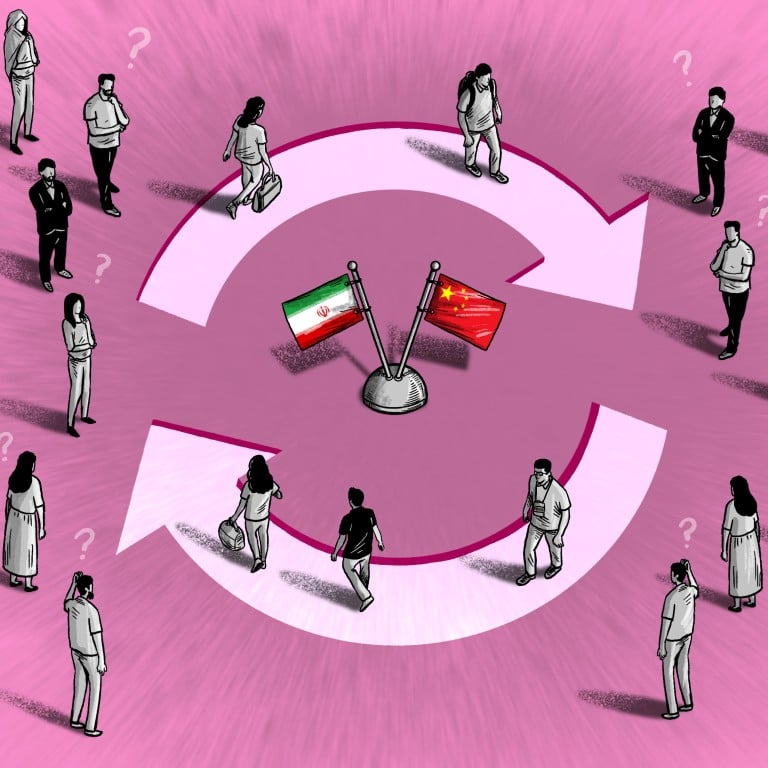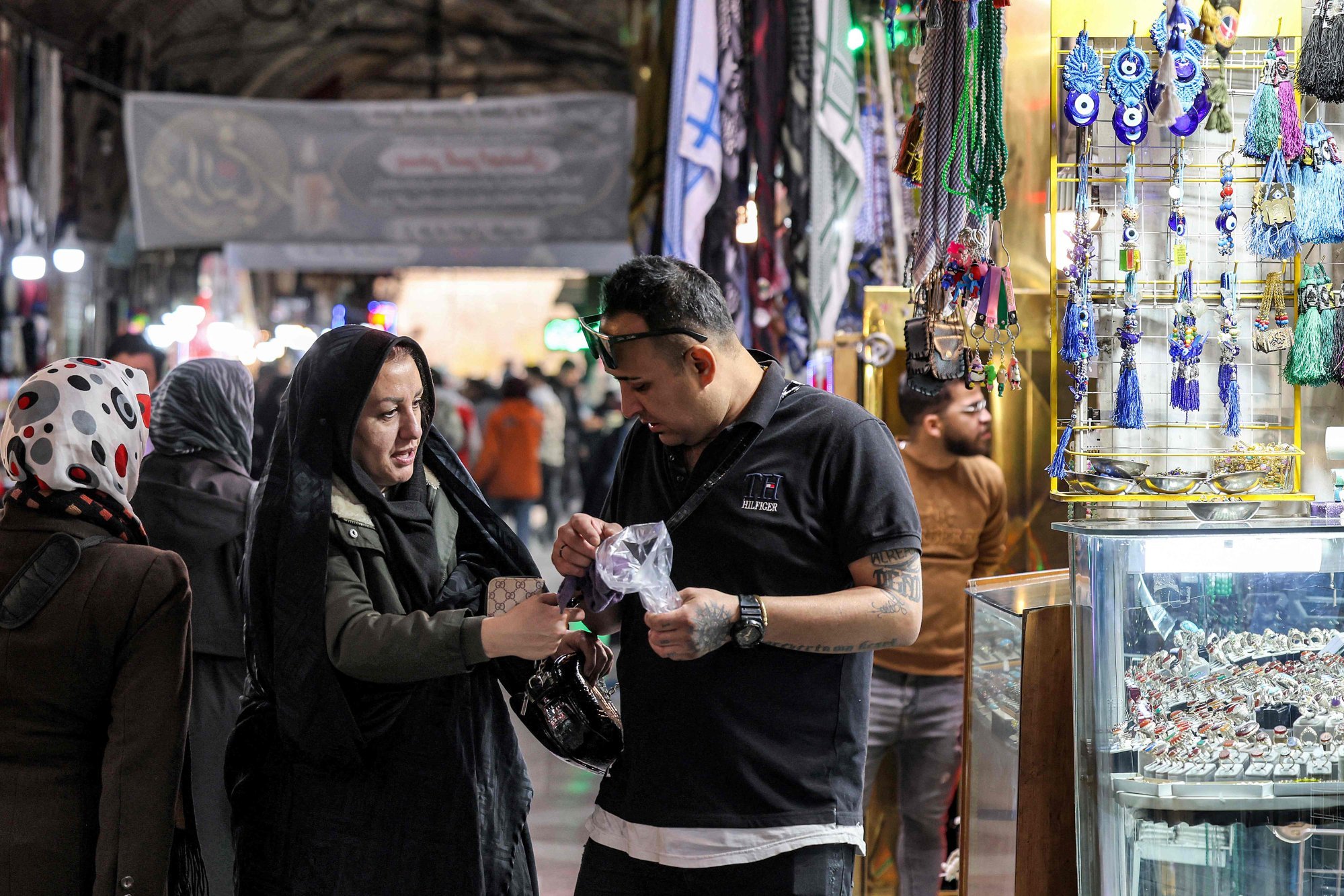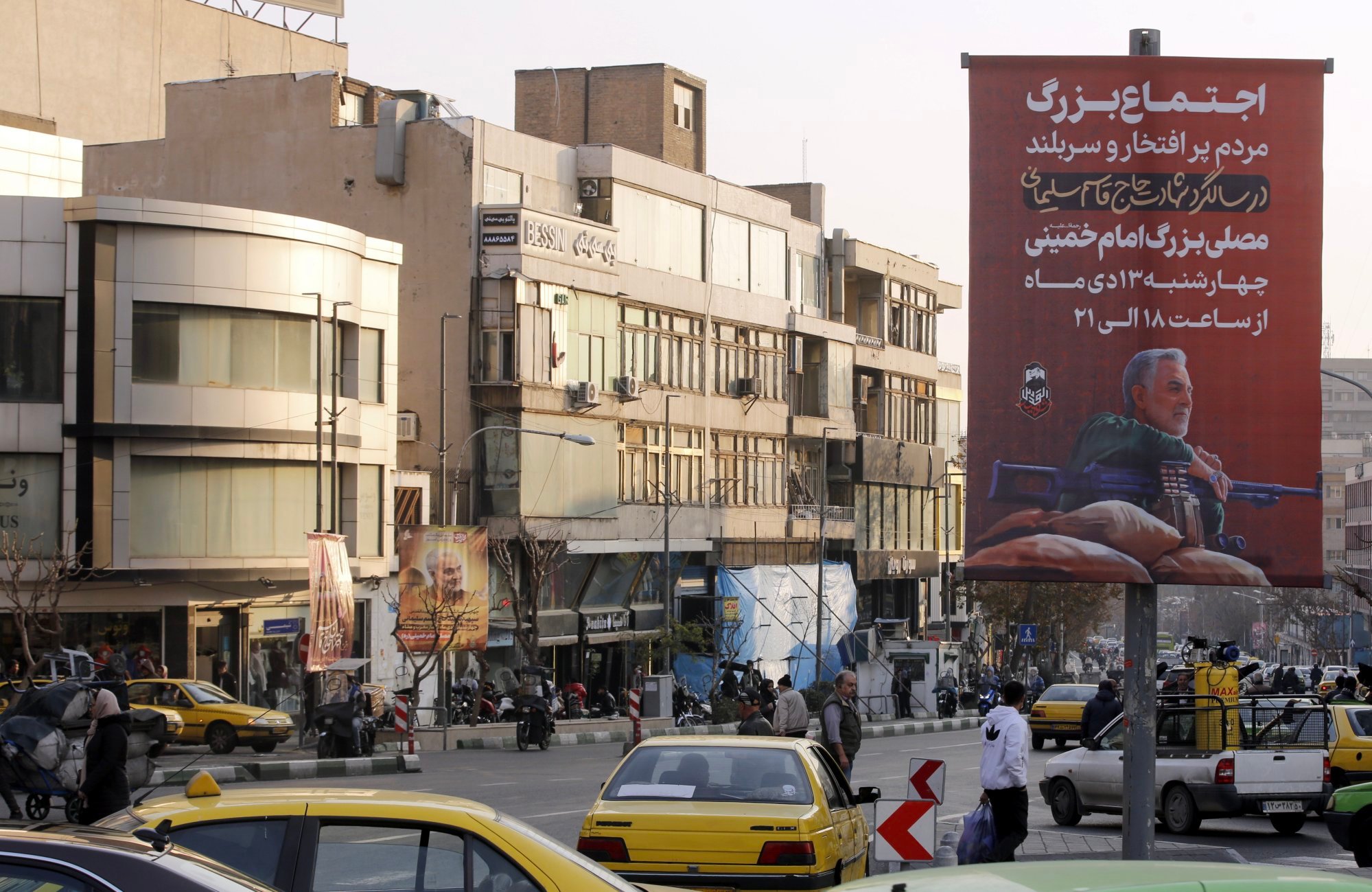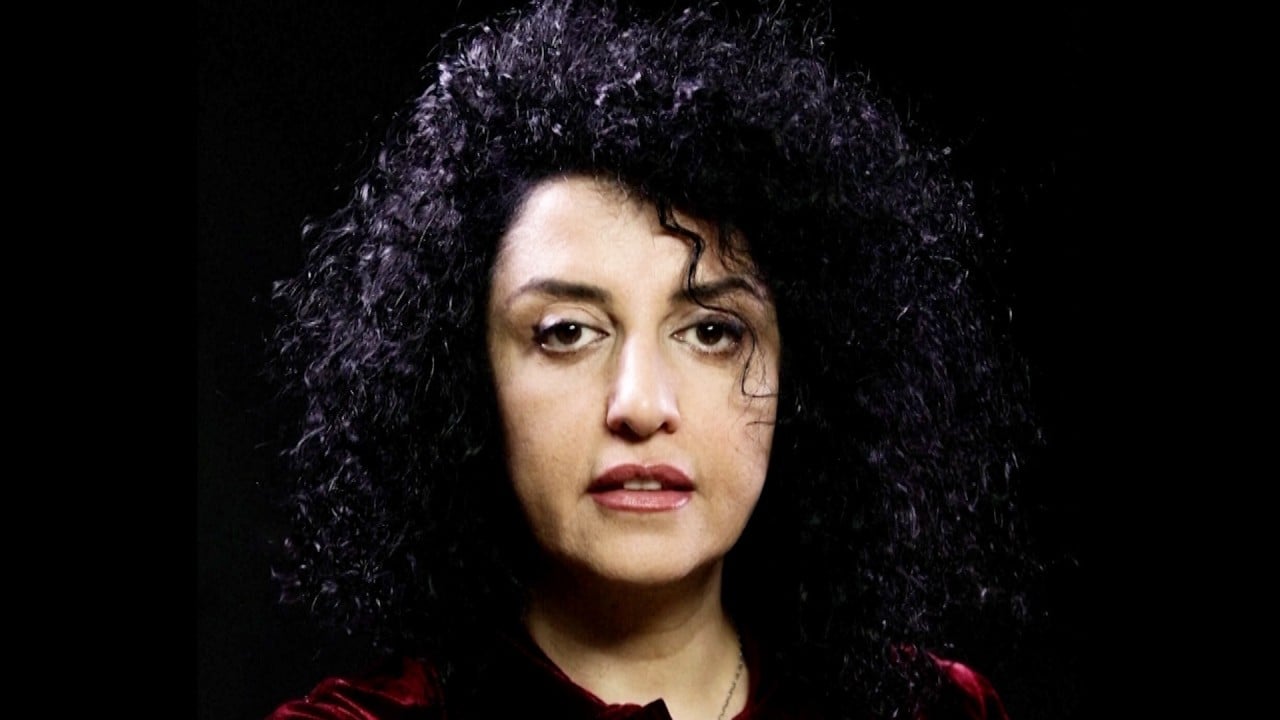
China and Iran push public diplomacy, but will Beijing’s soft power tactics work in the Islamic Republic?
- The countries are boosting tourism, culture and other exchanges so their people can ‘get to know each other’ amid antagonism from the West
- But some analysts question if Chinese outreach can succeed, saying it relies too much on government channels, which might alienate many Iranians
During her trip through Tehran, Shiraz, Isfahan, Kashan and Yazd, she was warmly welcomed by locals and invited to take selfies. Free tea and hookah sessions often followed.
“Everyone, everything is thriving. [Iranian] people care about each other, and they talk about politics. It is like China 20 to 30 years ago,” Liang said.

Liang, a 27-year-old consultant from Shanghai, chose Iran as her first travel destination after Covid-19 restrictions were eased, joining a growing number of Chinese tourists who have visited the country since Tehran waived visa requirements in 2019.
China, Iran sign policing pledge during Iranian police chief’s Beijing visit
This comes as the two countries face an increasingly hostile international environment and antagonism from the West.
Growing China-Iran ties
Beijing’s public diplomacy efforts in the country date back as early as 2016, when Chinese President Xi Jinping called for strengthened exchanges in culture, education, journalism, publishing and tourism ahead of his state visit to Iran.
Raisi echoed the sentiment seven years later. Before visiting China in early 2023, he wrote that China and Iran should promote people-to-people exchanges so people from the two countries could “get to know each other directly in the new era” rather than getting to know each other “through third parties”.
Since the two leaders met last year, the countries have held at least 10 meetings between senior officials focusing on such exchanges, according to data collected by the Post.
In October, China’s vice-minister of culture and tourism, Lu Yingchuan, signed a five-year implementation plan for cultural and educational exchanges in Iran.

Fan Hongda, a professor at the Middle East Studies Institute at Shanghai International Studies University, said China and Iran’s efforts to boost public diplomacy filled a gap with respect to their booming economic and diplomatic ties.
“Both China and Iran are facing a number of development difficulties, and their mutual needs are quite strong. However, in actual cooperation, there is a prominent feature that there is more governmental cooperation and not enough civil interactions,” he said.
Beijing and Tehran have become closer than ever. Despite sanctions imposed by Washington, China’s oil imports from Iran jumped 48 per cent year-on-year in the first half of 2023, making Iran its third-largest oil supplier, following Saudi Arabia and Angola.
Escaping economic isolation
Iran became a member of the Shanghai Cooperation Organisation (SCO), a Beijing-led security bloc, in July and will officially join Brics this year.
Fan added that a lack of people-to-people interactions would limit the effectiveness of government cooperation. “Therefore, both countries hope to increase civil exchanges in the fields of culture and education,” he said.
China and Iran pledge cooperation ahead of Brics summit
Alex Vatanka, founding director of the Iran programme at the Washington-based Middle East Institute, said that both China and Iran were eager to boost their presence in each other’s societies, but for different reasons.
He said for China, a bigger presence in Iran was part of Beijing’s ambition and strategy to play a bigger role in the Middle East.
As for Iran, its deteriorating image in the West has forced Tehran to attract Chinese support, especially in tourism, Vatanka said.
Both countries appear to be making progress on their goals. Some 50,000 Chinese travellers visited Iran during the first seven months of 2023, while just under 1,400 came during the same period of 2019, according to Ali Asghar Shalbafian, Iran’s deputy minister for culture and tourism.
The worker added that most foreign visitors now in Iran were Chinese because tourist numbers from other countries had not yet rebounded despite the end of the Covid-19 pandemic.
China-Iran academic connections
China’s efforts to transform from an economic partner to a powerful player on all fronts in Iran have also paid off, especially in the academic and educational fields.
Nika, an Iranian master’s degree student studying in Zhengzhou in central China, said there were around 1,000 Iranian students in the city. The number before the pandemic was only about 50.
Iranian students think “Chinese universities are quite good” and the costs are not too high, according to Nika, who added that of the 1,000 Iranian students in China, most were self-funded, as “only a few dozen” had scholarships.
Mandarin learning boom as China extends its soft power in Middle East
“Many people support me when they learn that I am studying in China, and they would like to come to China to study,” said Nika, who will begin PhD studies in Shanghai in September. She added that most of her friends and family think “China is a very developed country”.
Saeideh Zarrin, a PhD student in Shanghai studying Chinese history, said most Iranian students in China were focusing on Chinese language, but increasing numbers were choosing science disciplines such as medicine.

Zarrin studied Chinese as an undergraduate student at the University of Isfahan, one of only two universities in Iran that offered Chinese as a major when she was in university – the other being Shahid Beheshti University in Tehran. Since then, two other Iranian universities have started to offer Chinese as a major.
The Chinese learning boom is not limited to the country’s universities. Iran will include Chinese as an optional language in secondary schools from 2024.
During Raisi’s visit to Beijing in early 2023, the two countries agreed to boost Chinese and Farsi education in each other’s countries. China also agreed to provide international scholarships for Iran’s Chinese language teachers.
Mixed views of China in Iran
However, analysts said the exchanges had not necessarily succeeded in Beijing and Tehran’s goals of projecting a positive image to ordinary people in each other’s countries.
John Calabrese, a senior fellow at the Washington-based Middle East Institute and an associate professor at American University, said Iranians “vary widely” in their views on China, which tend to be influenced by their stance on the Iranian government.
“Some likely view China’s development model as a source of emulation and regard the boosting of economic ties with China and other Asian countries as highly desirable,” he said.
‘The truth’: China seeks to build soft power through cultural counteroffensive
“Others are no doubt wary of China, concerned that the economic relationship already is, or is likely to become, unbalanced. Still others are presumably disappointed that China has been slow to ‘deliver’ on its economic pledges.
“Similarly, I would venture to say that there are diverse opinions within Iran regarding the Chinese political system.”
Zarrin, the PhD student in Shanghai, said most ordinary Iranian people had a “very vague impression of China”, and some of them held negative ideas popularised by foreign media.
“The [Iranian] people are affected by international news. It’s not because of China, but some Iranians are not happy with the government, so whichever government has a good relationship with Tehran, [they] will naturally dislike that country,” she said.
But Vatanka said China’s efforts to counter other narratives in Iran had not been effective.
“I don’t see China playing a big role in public diplomacy. It’s not evident in Iranian media. When you go on the internet, you don’t see much mention of Chinese efforts alone in public diplomacy.
“So if it’s been done, it’s been done quietly, which means it’s not very effective.”
Iran launches satellite as part of Western-criticised programme
Despite government restrictions, Iranian people can easily access international Farsi-language media based in London or Washington, such as BBC Persian, Vatanka said.
“They [the Western media] are the most popular programmes that ordinary Iranians watch. Ordinary Iranians don’t watch anything from China. This is something China can try and fix,” he said.
Friction between public and government
Steering exchanges through officially sanctioned channels has been another obstacle for China in overhauling its image in Iran, according to Fan from Shanghai.
“In some countries, the relationship between the government and the people is not good, and in such cases, the people tend to be suspicious of government-led actions,” he said.
“This phenomenon exists in Iran, so it is difficult to rely solely on government-to-government communication, or government-led communication, to achieve mutual awareness among the people.”
Alireza Khoshrou, a senior research associate at Iran’s Islamic Cultural and Relations Organisation, agreed, adding that until both countries prioritise public diplomacy based on “scientific principles”, their current approaches would remain “propagandistic”.

“Iran lacks the necessary foundations to fully understand China, particularly in the scientific field of public diplomacy as well as in terms of people-to-people exchanges. It would take at least a decade for Iran to develop this understanding.”
According to Vatanka, China and Iran must strengthen their foundation for cooperation as their shared anti-American and anti-Western sentiments were currently the main driving force.
“There are inherent limitations to how close these entities can move together. They’re very different entities, the Islamic Republic of Iran and the Communist Party of China, he said, adding that “anti-Americanism and anti-Western [sentiment] are such important factors in keeping China and Iran together”.
“This is not enough in the long term to maintain close relations, you need to make the relations deeper,” he said. “And you can only make it deeper by appealing to the Iranian public as well.”



